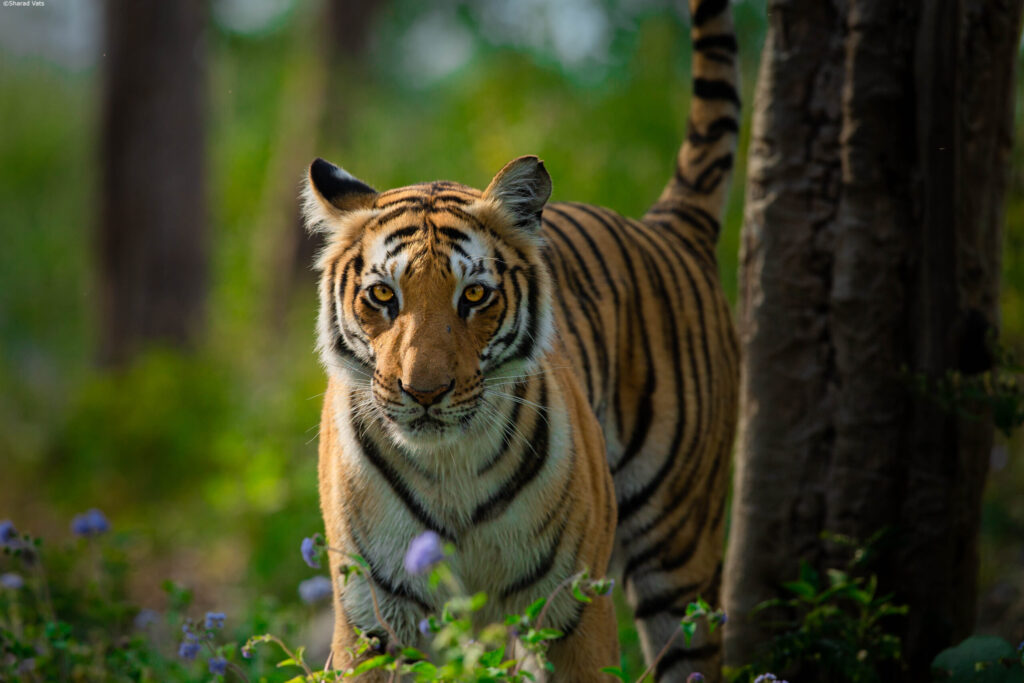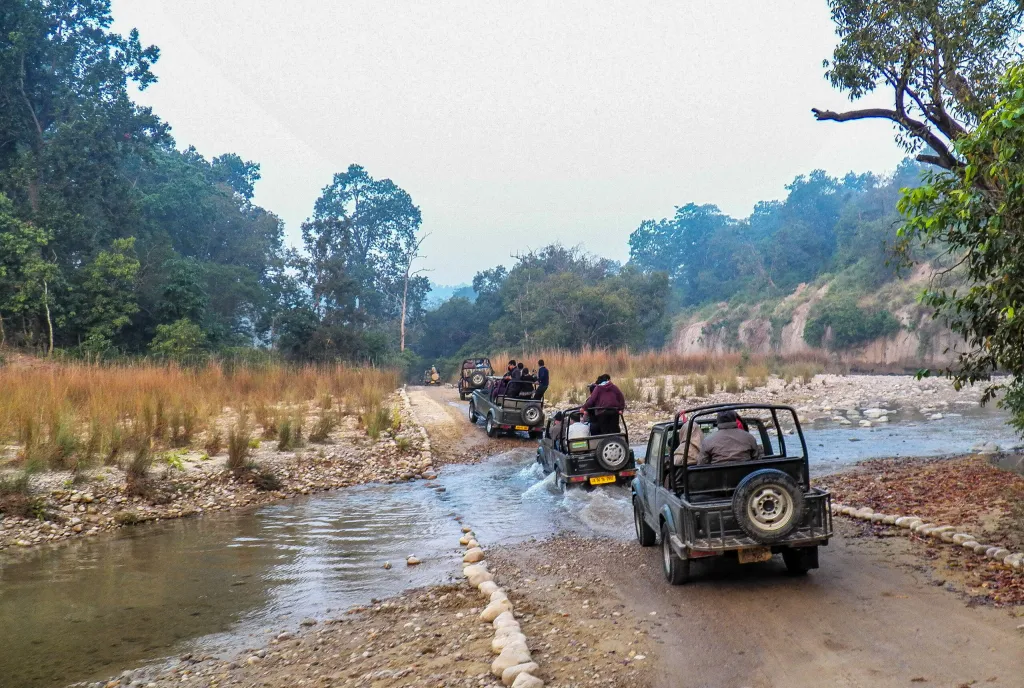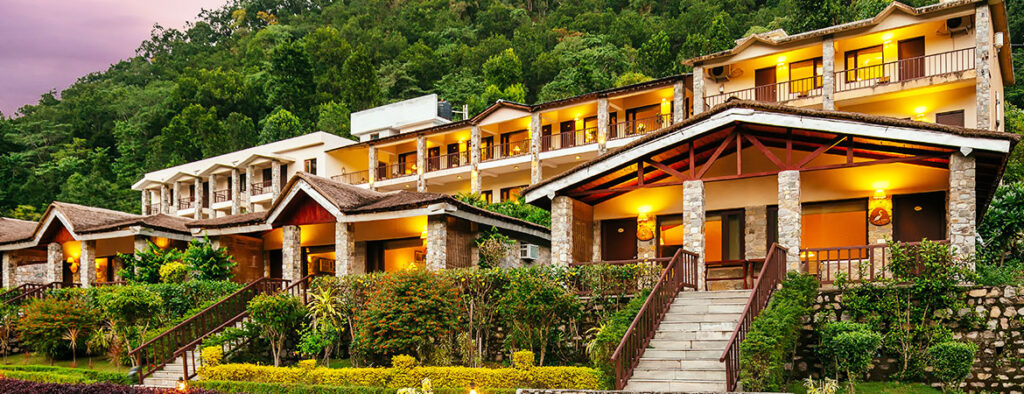
Guide to Jim Corbett National Park & Tiger Reserve
Jim Corbett National Park is one of India’s oldest and most famous national parks. It was founded in 1936 in the Uttarakhand district of Nainital. The park has a total area of 1318 square kilometres and is home to a wide variety of vegetation and fauna. Jim Corbett national park is situated in Uttrakhand.
Jim Corbett National Park is named after Jim Corbett, a legendary hunter turned conservationist who was instrumental in its creation. Jim Corbett was a tiger and leopard hunter, one of India’s foremost conservationists, and a gifted writer who could craft a page-turning narrative.
Jim Corbett was the site of Project Tiger’s inception in the 1970s and is an important animal and nature preserve in India. The Corbett Tiger Reserve is home to about 250 wild tigers, as well as herds of wild elephants, other endangered species, and an abundance of birds. It’s one of India’s best birding spots.
When to visit Jim Corbett National Park:
From November to June is the best time to explore Jim Corbett National Park. The park is closed from July to October due to the monsoon season. The months of April to June are thought to be the greatest for spotting tigers since they come out to drink water in the heat.
How to Reach Jim Corbett National Park:
Jim Corbett national park is located in Nainital. So, Pantnagar Airport, about 50 kilometres distant, is the closest airport to Jim Corbett national park. Ramnagar, the nearest railway station, is well-connected to major Indian cities. From there, you can take a taxi or a bus to the park.
Which Zone is Best in Jim Corbett National Park:
Jim Corbett National Park is separated into zones, each of which offers a distinct experience. Jim Corbett National Park’s best zones of jim corbett include Dhikala, Bijrani, and Jhirna.
Dhikala is the park’s most visited jim corbett best zone and is recognised for its diverse biodiversity. Bijrani is well-known for its tiger population, but Jhirna is well-known for birdwatching.
How to Book Safari in Jim Corbett National Park

There are around five gates in Corbett National Park, and there is commercial activity outside the two main sections.
- Dhela Gate: Dhela Zone and Jhirna Zone access point
- Amdanda Gate: Bijrani Zone access point
- Garjiya Gate: the entrance to the Garjiya Zone.
- Durga Devi Zone: Durga Devi Zone entrance point
- Dhangari Gate: Dhikala Zone access point Vatanvasa Gate: Sonanadi Nature Sanctuary entry point.
The corridor that runs along Jim Corbett National Park from Ramnagar, past Amdanda Gate and Garjiya Gate, is the park’s busiest sector. There are many large leisure in jim corbett hotel that back into the Ramganga River here, and the majority of them are more leisure resort than wildlife lodge.
There is less commercial activity closer to the Dhela Gate, and here you will find some of the most serious wildlife lodges and homestays.
Aahana The Corbett Wilderness Resort, The Rangers Lodge, and Jim’s Jungle Retreat are all located here. It’s a lot more tranquil setting, peppered with villages and rural areas.
Animals of Corbett
On my first visit to Jim Corbett National Park’s core zone, I had five safaris in three zones: Dhela twice, Jhirna twice, and Garjiya once. I saw four tigers in Jhirna (three members of a family: mother, male cub, and female cub), several elephants, including one magnificent male tusker (in Jhirna), well over 40 bird species, including three Asian paradise flycatchers, lots of golden jackals, wild boar, sambar, dancing peacocks, butterflies, and on and on and on.
Even though I have yet to stay at Dhikala, which is 30 kilometres inside the park, I enjoyed my introduction to Corbett. But that is my dream, and hopefully it will come true next time!
Except from a previous stay at Vanghat Lodge in the buffer zone, this was my first journey to Corbett. I had a great day meeting new people and reconnecting with old ones. I had a fantastic time on my five safaris and saw some incredible vegetation and creatures. I discovered a handful of fantastic locations to stay, which I’ve listed here.
And I learned a lot about Corbett — not just the park, but also the wildlife culture here, which is extremely different from Madhya Pradesh’s tiger sanctuaries. However, some of what I’ve witnessed is alarming in terms of disrespect for nature, park rules, and the ecosystem.
Jim corbett national park, along with Ranthambhore, is possibly the most tiger-centric park I’ve visited. It’s heartbreaking to see jeeps packed with city dwellers concentrated on only following the tiger and failing to notice a crested serpent eagle perched close on a low limb.
On my safaris here, I witnessed a handful of unsettling incidents in which the cars (and the people in them) raced to find the tiger, causing noise, clouds of dust, and a commotion, with a couple of drivers even cursing at each other.
Jim Corbett National Park Resorts

Jim’s Jungle Retreat
One of the best Jim Corebett national park resort is Jim’s Jungle Retreat. Have you ever been somewhere that you wished you could stay and never leave? Something appeared ideal in every manner, and it corresponded to your style preferences, emotions, and interests?
That’s how I felt about Jim’s Jungle Retreat, a well-known wildlife resort near Corbett National Park’s Dhela / Jhirna gate. I’ve visited a number of wildlife lodges in India, and Jim’s Jungle Retreat is without a doubt the greatest in every way.
It matched and even above my expectations. It all begins with the land. Almost 20 years ago, the family purchased the damaged land close to Corbett’s core zone and began rewilding. They did an outstanding job because it is a thriving wildlife habitat in its own right.
This is not a cultivated paradise! It is a very natural habitat teeming with birds, butterflies, and insects, replete with various waterholes and machans that allow you to peer directly into the park. On the land, over 250 bird species have been identified, and I personally observed a big flapshell turtle move from one waterhole to another.
Except for birds, there is no sound. The facilities and cottages of Jim’s Jungle Retreat are almost covered by the forest, giving the lodge a different and more natural atmosphere than any other wildlife lodge I’ve seen.
I was at Lodge #4, which was located over the Yoga Shala. The lodges are newer than the cottages and much larger, with just the proper amount of space.
Vanghat Lodge
Vanghat Lodge is a truly unique location. Vanghat, which is adjacent to the Corbett buffer zone, is deep in the jungle, a few kilometres from the nearest road. To get there, you must hike through numerous villages and cross the Ramganga River on a handmade raft.
You are entirely immersed in nature when you arrive. There are no roads, electrical lines, or internet access. Nothing except pristine nature, clean air, dense trees, a glistening river, and the visible and invisible presence of birds and wildlife.
Vanghat was once a little village, and when owner Sumantha Ghosh renovated the land few years ago, he saved one of the ancient stone structures. He erected four thatched roof cottages, a dining room, and a staff and volunteer apartment, ensuring that all buildings were spaced apart to allow for solitude and animal movement.
There are no jeep safaris at Vanghat; only walking safaris are available. We went on a five-hour walking safari over the river and into the park’s buffer zone when I was there. We hiked up hills, through ridges, through dense forest, and to a flowing waterfall. We stopped for tea and dipped our feet in the cold, clear stream.

Green Getaway Safari Excursions
I ran across an old buddy, Mohan Chandra Joshi, commonly known as Mojo, when visiting Corbett National Park. We met several years ago at Tree House Hideaway in Bandhavgarh National Park, Madhya Pradesh, when he was a naturalist with Pugdundee Safaris.
After that, our paths crossed several times in M.P., and I was always happy to see him. He is an exceptional naturalist with a friendly demeanour.
I recall going on a walking safari with Mojo in Satpura Tiger Reserve, and he told me how he became a naturalist. He was schooled as an engineer – the profession of choice for every Indian father – and landed a position in the field after graduation. Nevertheless, he only lasted 29 days.
Many things changed during the epidemic, and many people working in tourism-related sectors returned home. Mojo, too, returned home, this time to Ramnagar, Uttarakhand, which is close to Corbett National Park.
Mojo returned home and established his own company, Green Escape Uttarakhand, where he provides guided services and extensive knowledge of the Corbett region.
Mojo and I went on a road trip to see the region surrounding Corbett while I was in Corbett for a week. We departed early and drove past the main gates of Corbett, including the gate to the famed Dhikala zone, which is 31 kilometres inside the park.
Final Tips for Visiting Jim Corbett National Park
- Bring light, comfortable attire, especially in the heat.
- For the safari and other activities, wear comfortable shoes.
- Protect yourself from the sun by wearing a hat, sunscreen, and sunglasses.
- Have a camera with you to capture the wildlife and beauty.
- Respect wildlife and keep a safe distance from it.
- Respect the park’s rules and regulations by not littering.
If you are planning to visit Rajasthan. Check out the some of the best places of Nawalgarh Rajasthan here.
Here we come to the end of the blog. I hope you love this article. If so please share with you fellow travellers.
Some interesting blogs that you can check out:
- Spread Joy and Appreciation this International Women’s Day with Inspirational Quotes
- What is Not True About DoD Travel Policy?
- Is Jim Corbett National Park Worth Visiting in 2023?
- Breathtaking Maldives Island – Top 10 Reasons to Visit
- Phuket City’s Best Kept Secrets
- Explore the Best of Nawalgarh Rajasthan
- Explore Cuisine & Hidden Beaches in Philippines
- Discover the Beauty of Shimla: A 5-Day Itinerary for an Unforgettable Journey
- The Ideal Kerala Tour 5 Days Itinerary for an Exciting Vacation
- Ultimate 5-Day Rajasthan’s Wonders Itinerary
- Discover Goa: A 7-Day Tour of the Best Beaches, Temples/Churches, and History in Goa
- Tips for Creating a Seamless Travel Itinerary